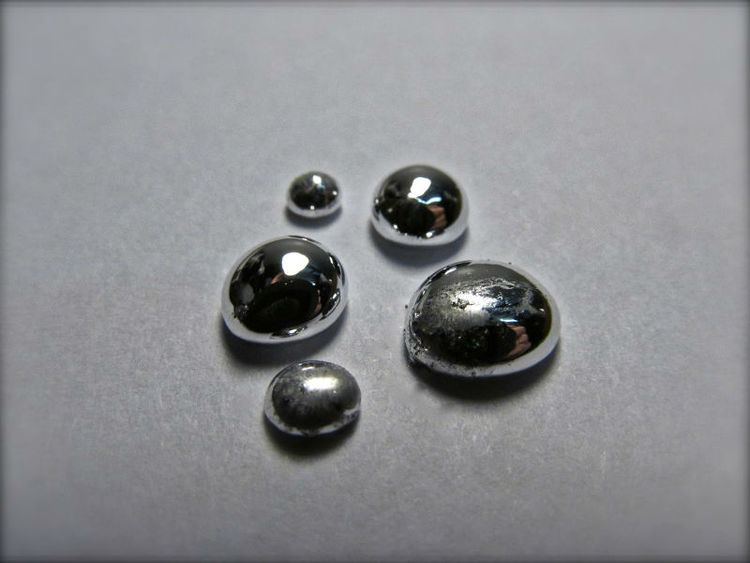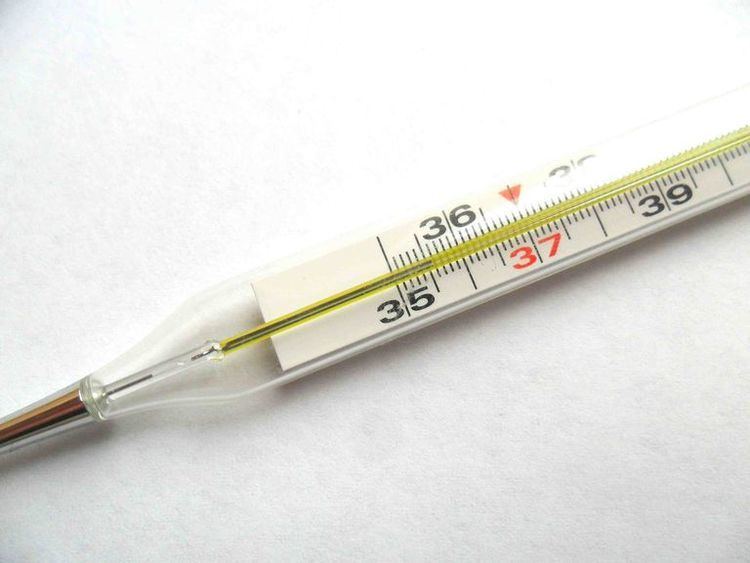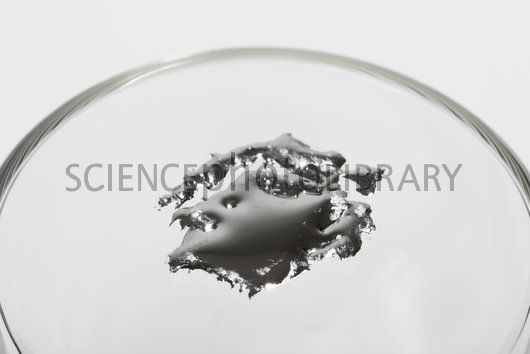 | ||
Galinstan is a commercial liquid metal alloy whose composition is taken from a family of eutectic alloys mainly consisting of gallium, indium, and tin. Such eutectic alloys are liquids at room temperature, typically melting at −19 °C (−2 °F). Due to the low toxicity and low reactivity of its component metals, Galinstan finds use as a replacement for many applications that previously employed the toxic liquid mercury or the reactive NaK (sodium–potassium alloy). An example of a typical eutectic composition is 68 wt% Ga, 22 wt% In and 10 wt% Sn, though it varies between 62 wt% and 95 wt% Ga, 5 wt% and 22 wt% In, 0 wt% and 16 wt% Sn, while keeping eutectic ability. The marketing name is a portmanteau of gallium, indium, and stannum (Latin for "tin"). Galinstan is a registered trademark of the German company Geratherm Medical AG. The exact composition of Galinstan is not publicly known.
Contents

Galinstan nontoxic liquid metal alloy
Physical properties


Galinstan tends to wet and adhere to many materials, including glass, which limits its use compared to mercury. Galinstan is commercially used as a mercury replacement in thermometers due to its nontoxic properties, but the inner tube must be coated with gallium oxide to prevent the alloy from wetting the glass surface.

Galinstan may be used as a thermal interface for computer hardware cooling solutions, though its cost and aggressivity (it corrodes many other metals such as aluminium by dissolving them) are major obstacles for widespread use. It is also electrically conductive, and thus needs to be applied more carefully than regular insulating compounds.
Galinstan has higher reflectivity and lower density than mercury; it is investigated as a replacement for mercury in liquid mirror telescopes for astronomy. It is difficult to use for cooling fission-based nuclear reactors, because indium has a high absorption cross section for thermal neutrons, efficiently absorbing them and inhibiting the fission reaction. Conversely, it is being investigated as a possible coolant for fusion reactors. Unlike other liquid metals used in this application, such as lithium and mercury, the nonreactivity makes Galinstan a safer material to use.
Melting-point controversy
The melting point of Galinstan has been a source of much debate. Many commercially available gallium, indium and tin eutectic alloys are advertised with a melting point of about +11 °C, which is significantly higher than the −19 °C featured by Galinstan. The official MSDS (material safety data sheet) mentions only that Galinstan is an "eutectic mixture of the metal components gallium, indium and tin" with no further explanation provided. Additionally, a US patent to Geraberger Thermometerwerk GmbH describes various related eutectic alloys and mentions that they may contain up to 2 wt% of antimony (Sb) to increase oxidation resistance and up to 2 wt% of bismuth (Bi) to improve fluidity. The resulting eutectic alloy is said to contain 68 wt% to 69 wt% Ga, 21 wt% to 22 wt% In, and 9.5 wt% to 10.5 wt% Sn, with small addition of Sb and Bi and an impurity level less than 0.001 wt%. The resulting material is noted to have a melting point of −19.5 °C and vaporisation point of above 1800 °C.
